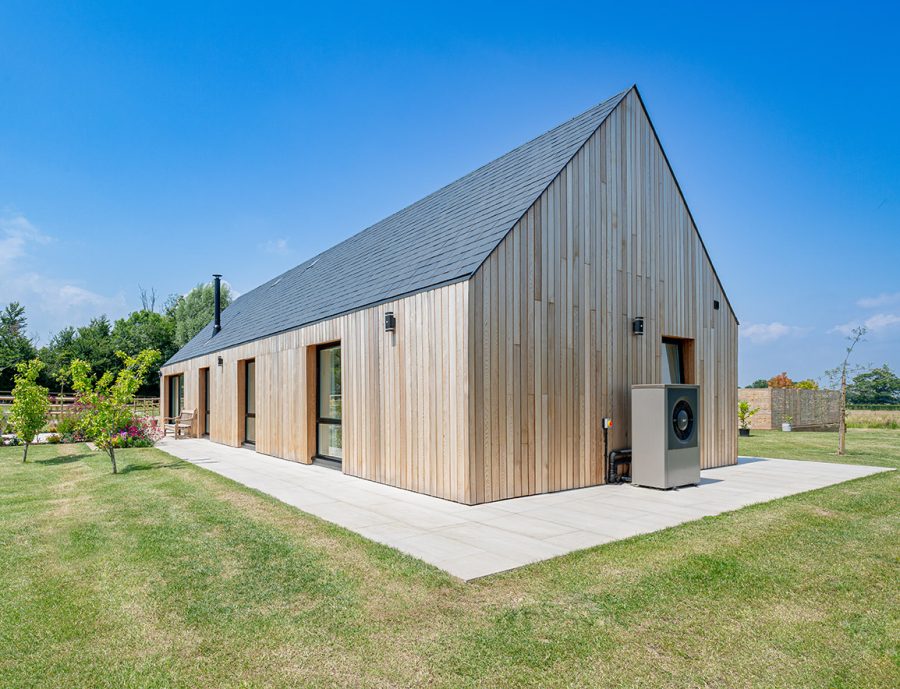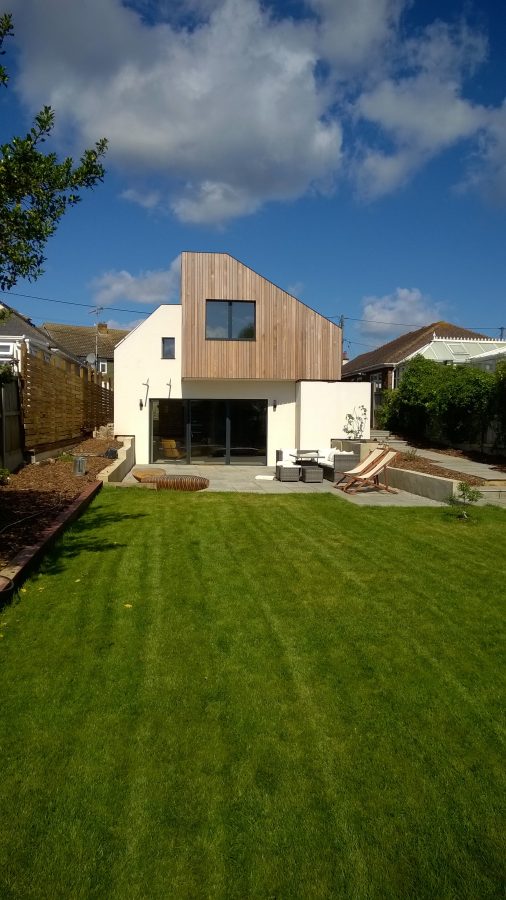Heat Pumps

Whenever we install a heat pump we are concerned to ensure that it will meet the expectations of the owner, particularly the operating costs. In comparison to a conventional boiler a heat pump needs to operate at a relatively low flow temperature to achieve the efficiency claimed by the manufacturer. Whilst most heat pumps can achieve temperatures of 55 to 60°C required to heat domestic hot water, they do so at the cost of lower efficiency (= higher cost).
Our key design objective is to minimise the frequency and extent to which a heat pump needs to operate at elevated flow temperatures. This will rely on installing a heating system that is designed to maintain a sufficient room temperature at a flow temperature of between 35 and 40°C. Existing wall mounted radiators will typically have been sized based on the flow temperature of between 70 and 80°C for a gas or oil-fired boiler and are unlikely to be suitable.

For a low temperature heating system to emit sufficient heat it will need to have a larger surface area, which can be achieved either with underfloor heating (UFH) or with oversized or higher efficiency radiators (e.g. fan coil). Alternatively by improving the building fabric with insulation, glazing or improved airtighness the specific heat loss can be reduced. This in turn reduces the amount of heat a radiator needs to emit to maintain a room at a comfortable temperature.
To improve the efficiency of any heat pump installation we also advise integrating it alongside a solar thermal collector. This helps to minimise the frequency with which the heat pump is required to raise hot water to 55°C. By sizing a solar thermal collector to achieve a 70% hot water solar fraction the majority of the time the heat pump operates at a low flow temperature, only needing to reach elevated temperatures during the winter.

A heat pump manufacturer will report the efficiency with which their product converts electricity to heat as its Seasonal Coefficient of Performance (SCoP). This is the overall coefficient of performance of the unit, representative of the entire heating season designated (the value of SCoP corresponds to a determined heating season).
We install both ground source (GSHP) and air source (ASHP) heat pumps. A GSHP should have a higher SCoP and thereby lower operating costs than an ASHP, i.e. a GSHP should use less electricity than an ASHP to produce the same amount of heat. As a rule of thumb, the SCOP for the GSHP will be about 0.7 higher than for an ASHP operating under equivalent conditions.
To be suitable for a heat pump ideally we would look for a building to have a benchmark peak heating requirement between 35 and 45 W/m2. If a building has a higher specific heating requirement it is likely that operating costs for a heat pump will be higher. This level of specific heat loss is unlikely to be achievable in an older style property without extensive refurbishment and improvements to insulation and airtightness.
